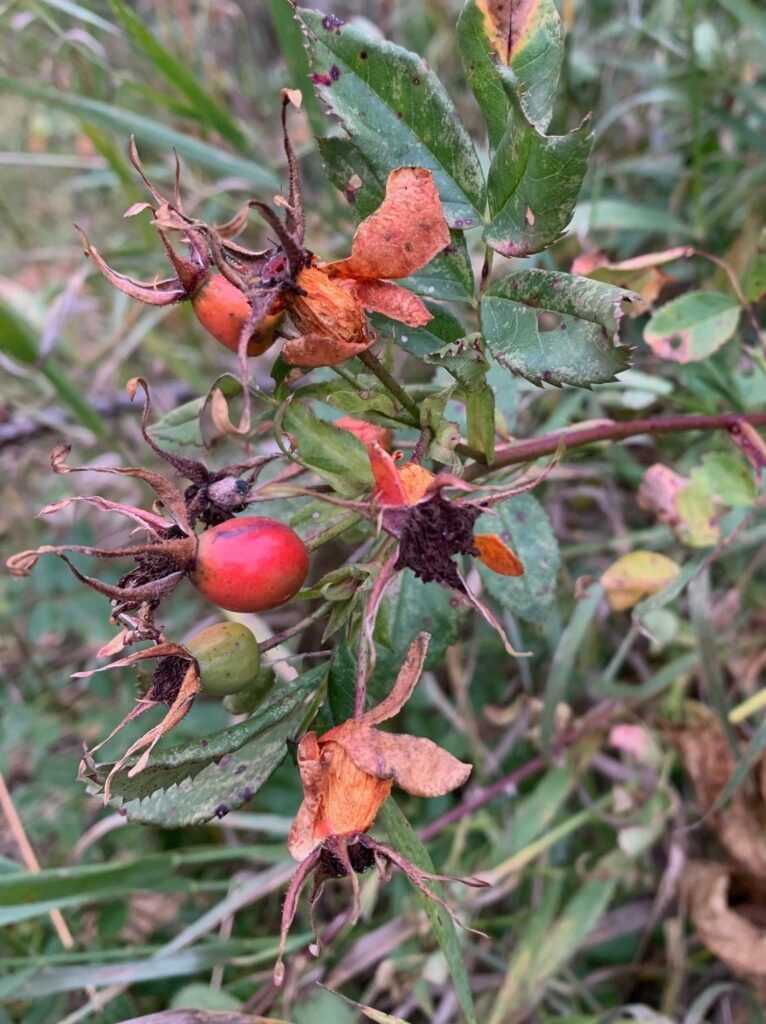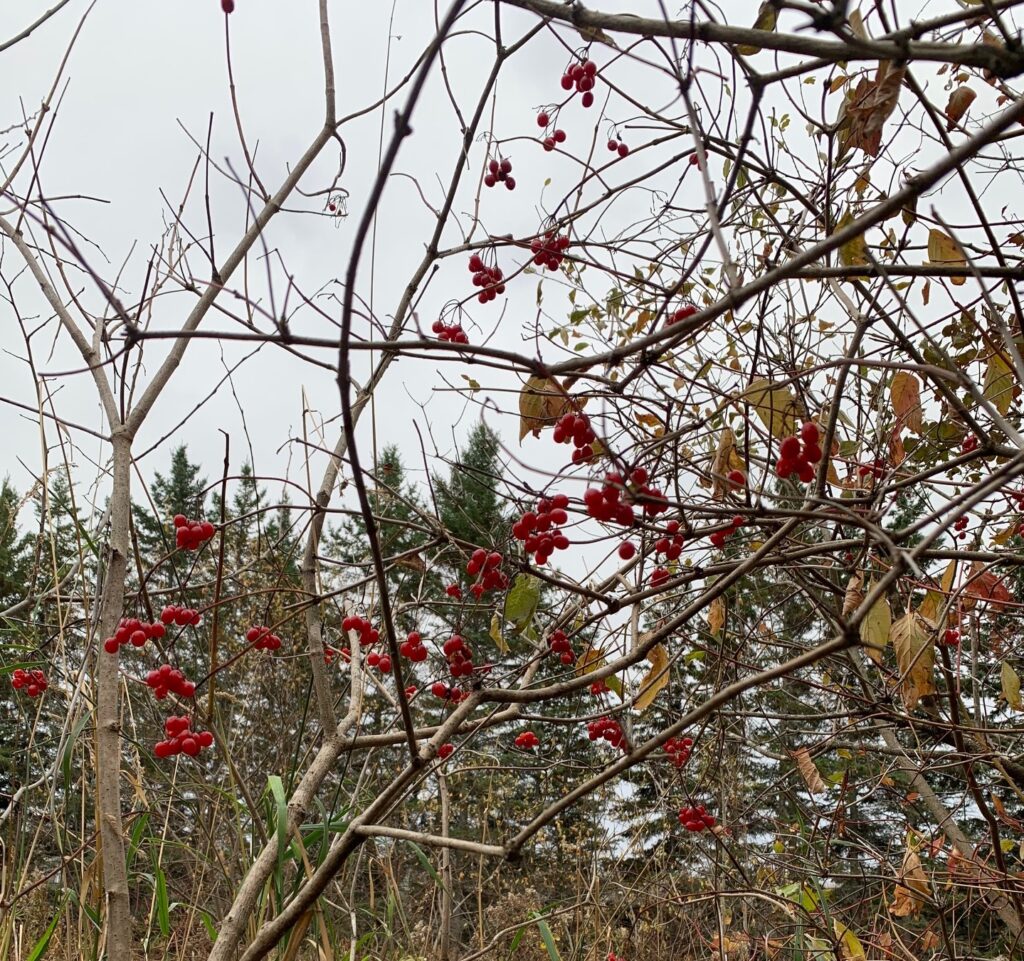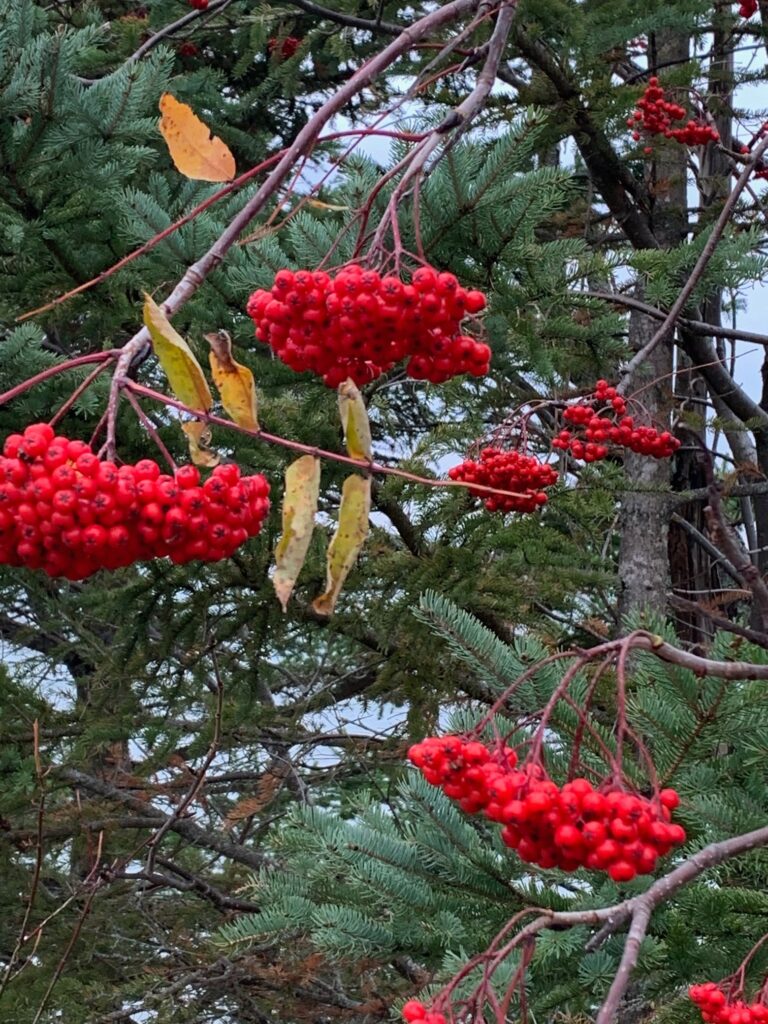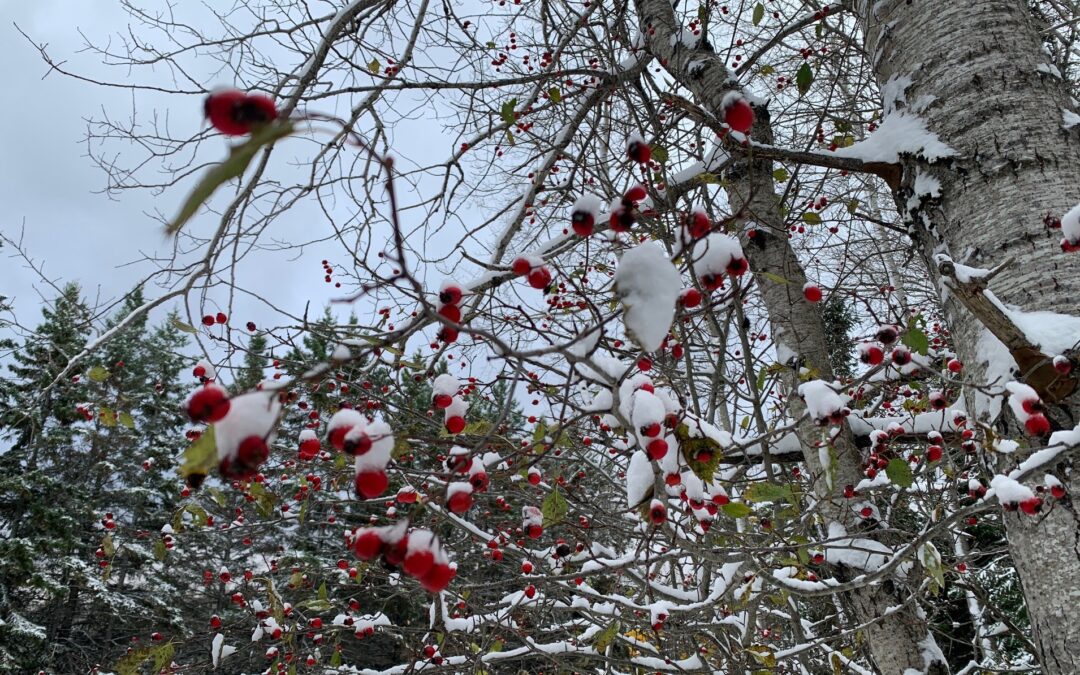Our human lifestyle has become so fast with cell phones, computers, email and fast automobiles, that we miss most of what is right before our eyes. We just zip past it! Whoosh!
For those of us who are walking and looking, there are lots of small things to notice. We’ve already looked at the seeds in pine cones and the acorns, which blue jays covet. What about berries?
Here are just a few berries that I found in northern Wisconsin. These Arrowwood (viburnum) berries were on some high bushes near one of my walking trails. The Mountain Ash berries that the waxwings love so much have a good crop this year.
The little wild Hawthorn tree with the long thorns has bright red berries in the snow.
Rose hips are abundant most years in Wisconsin. This year is no exception.
A lot of berries are red? Is there a reason for that? Do birds prefer red? When birds eat berries and poop out the seed, they help disperse the plant to new locations. In some cases, this dispersal is very important to the spread of plants. Unfortunately, many of our most obnoxious plants also spread this way. Buckthorn and Brazilian pepper are good examples of invasive species.
When I googled “Do birds like red?’ I got a rather circular answer. Birds are attracted to red because so many of the berries they like are red. It is likely that plants which have berries have evolved to be red because they are distributed by the birds better if they are red. It does seem probable that birds see red better than most other colors. Although perhaps it was mutual, and birds evolved to like red because when they are hungry for a berry, red is easy to see.
What do you spot as you walk along? Do you see berries close to the ground or are they primarily in bushes and trees? In the spring there are low growing red fruits such as strawberries on the ground. I didn’t find any winter berries so close to the ground. This is just an anecdotal observation on my part. What do you find in your location? Any berries near the ground?
Berries, and the seeds that we put in our bird feeders, provide energy in the form of carbohydrates and, perhaps, vitamins. But birds also need protein to sustain long migrations and for reproduction. Most of this protein is available to them through insects. Where do they find insects on a cold winter day?
Keep walking and looking for natural sources of food.





